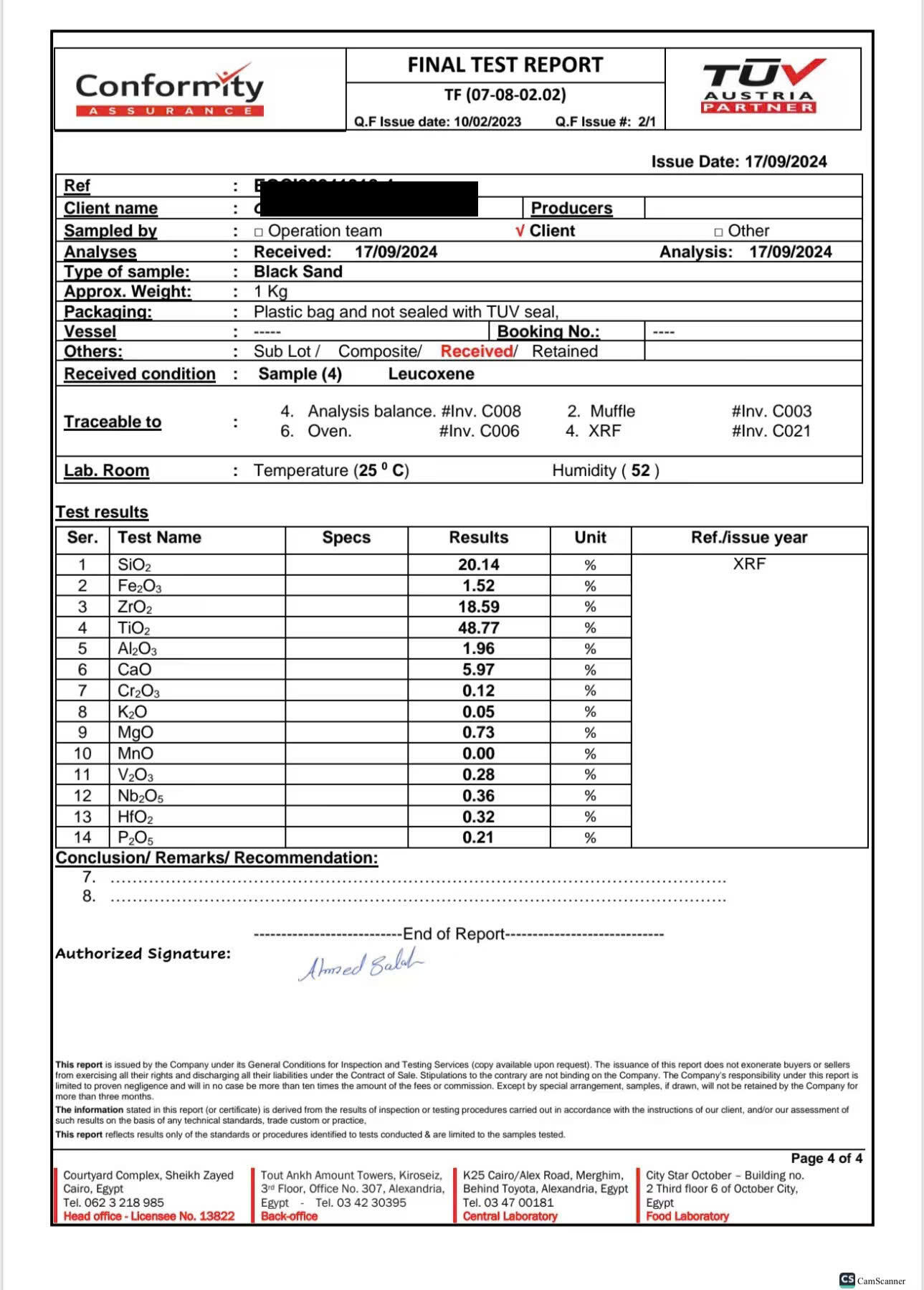-
Hotline : +84 981 282 028
- vyan.company@gmail.com
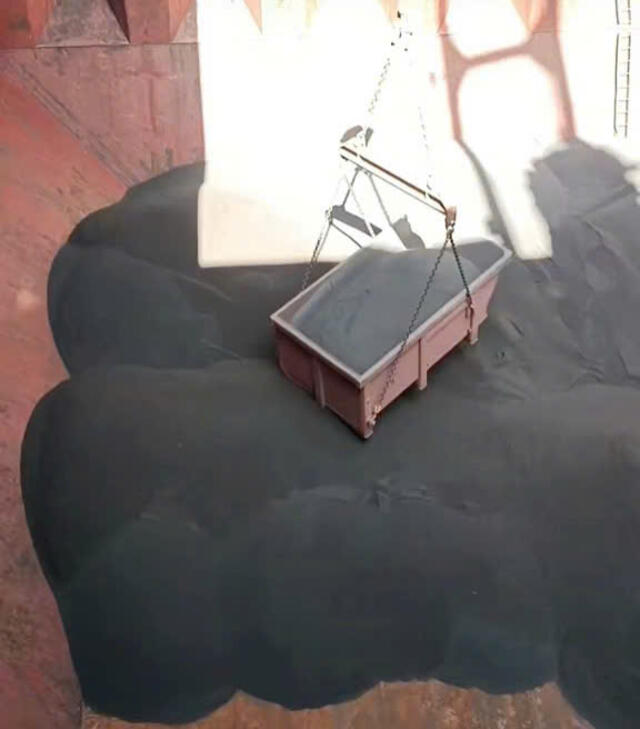
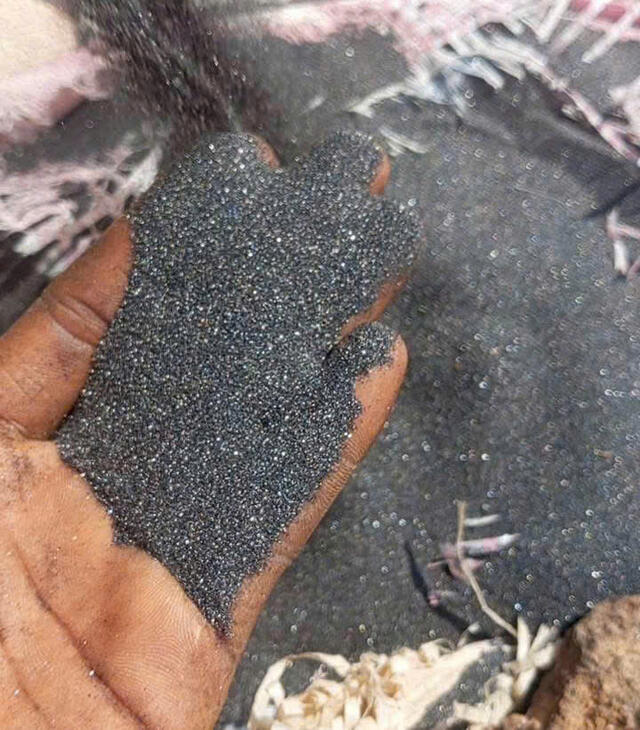
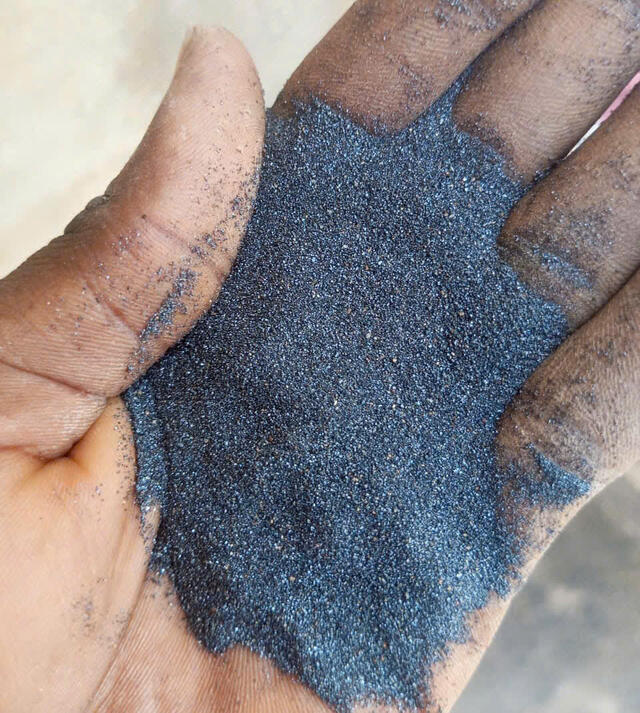
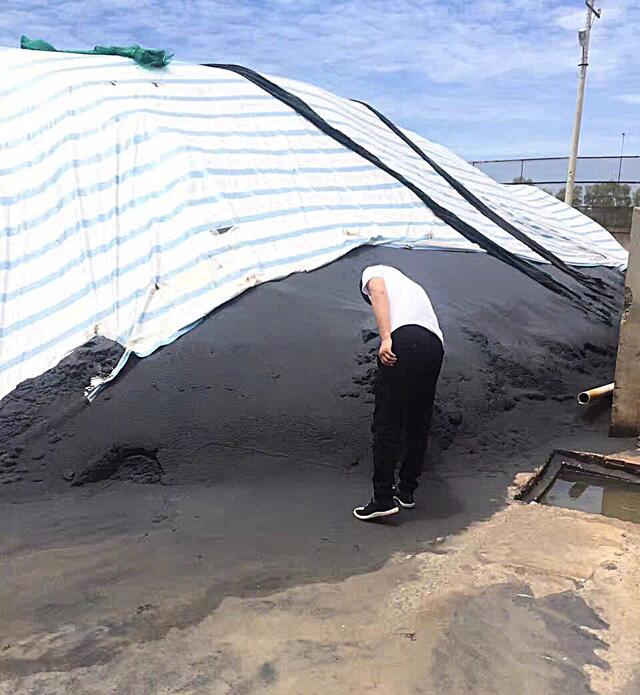




Raw Titanium Ore
Price:
ContactPeople are viewing this right now
1. PRODUCT DESCRIPTION
Titanium ore is a strategic raw material for modern industries, primarily containing two minerals: Ilmenite (FeTiO₃) and Rutile (TiO₂). Mined from coastal placers and primary deposits, Vietnamese titanium ore has large reserves but mostly exists in low-grade forms (0.6–0.7% heavy minerals). It plays a pivotal role in producing TiO₂ pigment (90% of global applications), titanium alloys, refractory materials, and high-tech industries (electronics, aerospace).
2. TECHNICAL SPECIFICATIONS
A. TECHNICAL PARAMETERS
TiO₂ Content:
- Ilmenite: 40–60%
- Rutile: 90–95%
Associated Minerals:
- Zircon (ZrSiO₄): 2–5%
- Monazite (rare-earth elements: Ce, La, Nd): 0.5–1%
Particle Size:
- Placers: 0.1–2 mm
- Primary ore: 5–50 mm
Melting Point:
- Ilmenite: 1,370°C
- Rutile: 1,843°C
B. MINING & PROCESSING STATUS
Mining Methods:
Placers: Gravity separation + magnetic sorting.
Primary ore: Underground/open-pit mining, with crushing + flotation.
Downstream Processing:
Ultra-fine Zircon Plants: 8 facilities in Hà Tĩnh & Bình Thuận (~45,000 tons/year, export-grade, particle size <5 µm).
Titanium Slag Smelters: 5 facilities (80,000 tons/year capacity, producing 70–75% TiO₂ slag).
Ilmenite Reduction: 2 plants (~10,000 tons/year) for welding rods/alloys.
C. DEVELOPMENT ROADMAP (2023–2030)
Short-Term:
Boost ultra-fine zircon output (>62% ZrO₂) to replace imports (~8,500 tons/year).
Expand titanium slag markets to EU/ASEAN, reducing reliance on China.
Mid-Term:
Build a TiO₂ pigment plant (30,000 tons/year, sulfate process).
Extract rare earths from monazite (target: 50–100 tons/year).
Long-Term:
Develop chloride process for porous titanium (post-2030).
Invest in titanium metal for aerospace/medical sectors.
D. CHALLENGES
Technical:
Low ore grades, high processing costs ($30–40/ton).
Power shortages for porous titanium production (25,000–40,000 kWh/ton).
Environmental:
Sulfuric acid/heavy metal waste from processing.
Need for red mud treatment and wastewater recycling tech.
1. RESOURCE STATUS
Vietnam possesses substantial titanium ore reserves, but most deposits are low-grade, averaging 0.6–0.7% heavy minerals (including remaining resources in gray/yellow sand layers).
Red sand layer deposits face challenges:
Water shortages for mining/processing.
High clay content → limits mining scale/efficiency.
Elevated production costs.
2. STRATEGIC PRIORITIES
Short-to-Medium Term Goals (2023–2030):
Develop mid-stream processing at scales aligned with mining capacity to dominate global markets for:
Titanium slag (70–75% TiO₂).
Synthetic rutile (key feedstock for pigments).
Reduce import dependence by gradually substituting domestically produced TiO₂ pigment.
Balance extraction-processing capacity to sustain current output levels.
Technology & Sustainability:
Ban new investments in outdated, polluting titanium slag technologies.
Upgrade existing facilities to:
Improve product quality (for export diversification beyond China).
Minimize environmental impact (e.g., acid/heavy metal waste).
3. PRODUCT-SPECIFIC STRATEGIES
Natural Rutile:
Reserve for high-end welding rods (import substitution) and future porous titanium/pigment production.
Zircon Byproducts:
Process low-grade zircon (57–64% ZrO₂) → upgrade to >62% ZrO₂ for:
Ultra-fine zircon (meeting Zircosil standards).
Zirconium oxide (higher-value export).
Opportunity: Global zircon shortage + Vietnam’s current ultra-fine zircon imports (~8,500 tons/year).
Porous Titanium/Metal:
Defer large-scale investments due to:
Prohibitive energy use (25,000–40,000 kWh/ton).
Lack of domestic chloride process expertise.
TiO₂ Pigment:
Immediate focus: Sulfate-process pigment plants (≥30,000 tons/year, EU-advanced tech with enhanced environmental controls).
Meet domestic demand + target regional exports.
Long-term goal: Pursue chloride-process plants (post-2030, post-feasibility studies on red sand deposits).
Rare Earth Recovery:
Extract rare-earth oxides (REOs) from monazite concentrates (Ce, La, Nd) → high-value byproduct.
4. CHALLENGES & RISKS
Technical:
Low ore grades → high beneficiation costs ($30–40/ton).
Energy-intensive processes vs. Vietnam’s power shortages.
Environmental:
Red mud/wastewater treatment requirements.
5. ACTIONABLE RECOMMENDATIONS
Prioritize R&D for:
Zircon refinement to >62% ZrO₂.
Rare-earth extraction from monazite.
Attract FDI for chloride-process pigment plants (post-techno-economic validation).
Enforce environmental standards in slag production to access EU/ASEAN markets.
